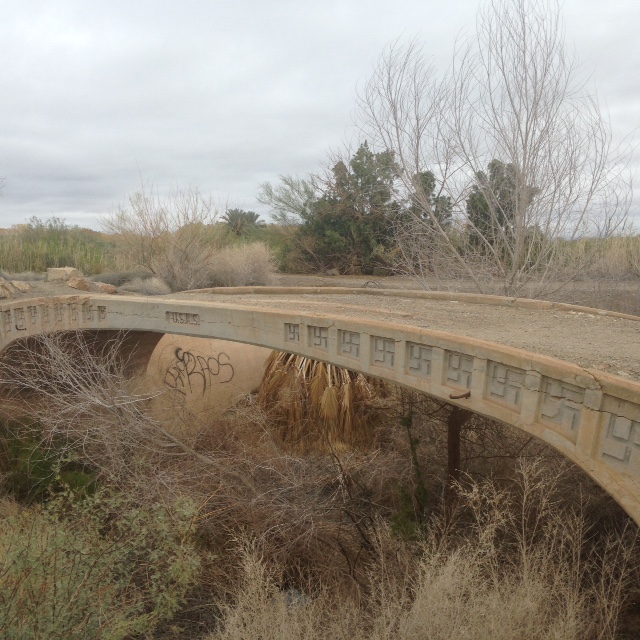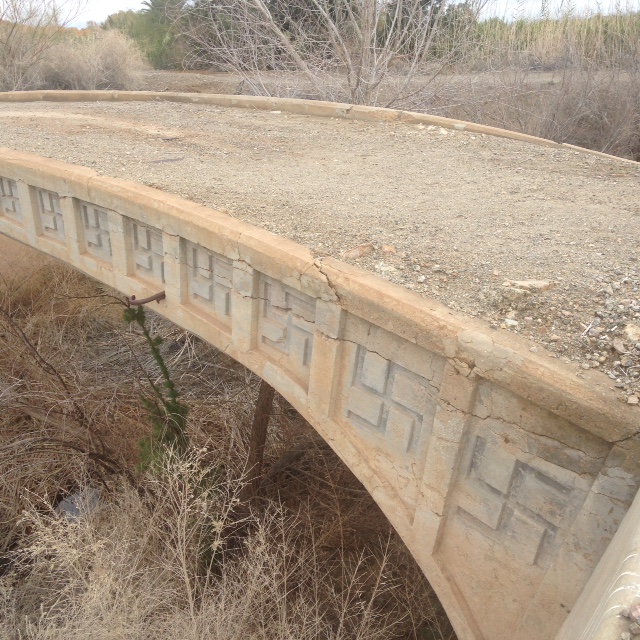Yuma Swastika Bridge
I spent New Year's Day in Yuma, Arizona, where I had a chance to see a local oddity — the Swastika Bridge, which can be found out in the desert just north of the city.
According to local legend, the swastikas were carved into the bridge by German POWs held nearby during WWII. Another story has it that the bridge was designed by the Nazis and shipped to Arizona from Germany.
The reality is that the bridge was built in 1907 by the U.S. Reclamation Service. The engineers decorated it with swastikas after seeing similarly designed and decorated bridges during a trip to India.
The bridge was part of the larger effort to dam the Colorado River and create an agricultural oasis around Yuma.
More info at the Yuma Sun or smoter.com.
And you can find a lot of other examples of the pre-Nazi use of swastikas in American culture at the American Swastika blog.


According to local legend, the swastikas were carved into the bridge by German POWs held nearby during WWII. Another story has it that the bridge was designed by the Nazis and shipped to Arizona from Germany.
The reality is that the bridge was built in 1907 by the U.S. Reclamation Service. The engineers decorated it with swastikas after seeing similarly designed and decorated bridges during a trip to India.
The bridge was part of the larger effort to dam the Colorado River and create an agricultural oasis around Yuma.
More info at the Yuma Sun or smoter.com.
And you can find a lot of other examples of the pre-Nazi use of swastikas in American culture at the American Swastika blog.


Comments
Per a documentary I saw, this symbol was used as a good luck sign in cultures way before the Nazis came marching along. They picked it up and used only the version that "rotates" to the left. It may not be really correct to call the right-rotating one a swastika, but that's obviously hard for us to get away from.
Posted by Virtual on 01/07/17 at 12:37 PM
I've seen swastikas on the parquet floor of a hundred year old house.
Posted by ges on 01/07/17 at 06:21 PM
The swastika, as you remark, has a long tradition in India. My mother has a set of Rudyard Kipling's works that was published in 1927, as I recall. It has a small swastika on the spine of each volume. A few years later Kipling decided that the swastika was inextricably linked to something that repelled him, and ordered it removed from all his published works.
Posted by John Ayer on 01/07/17 at 07:48 PM
Commenting is not available in this channel entry.

Category: Buildings and Other Structures | Evil | Signage